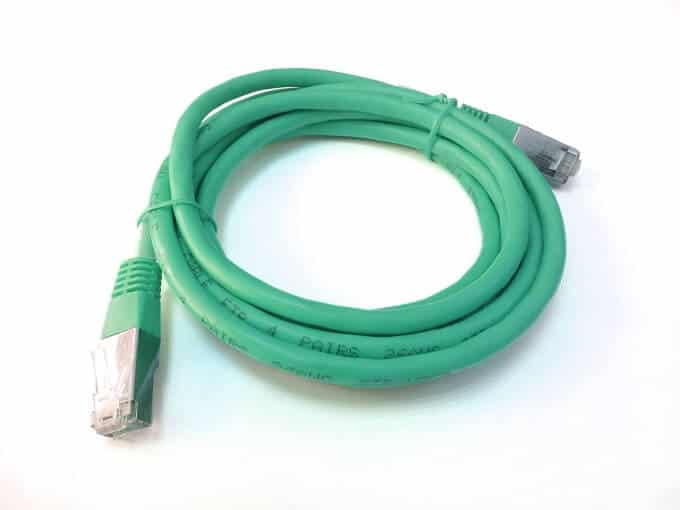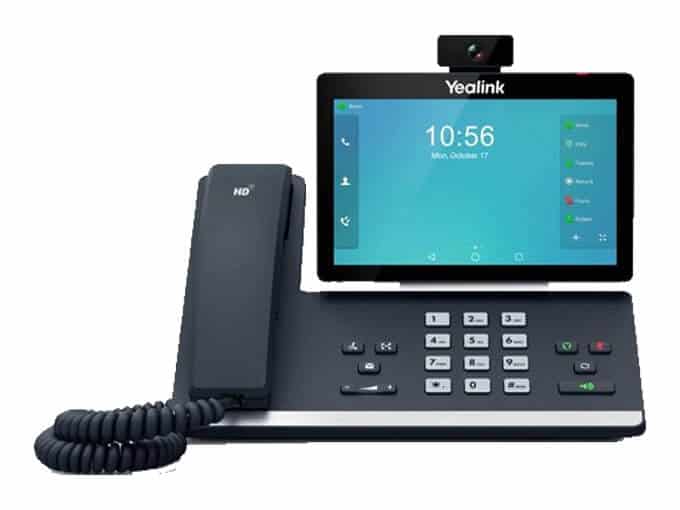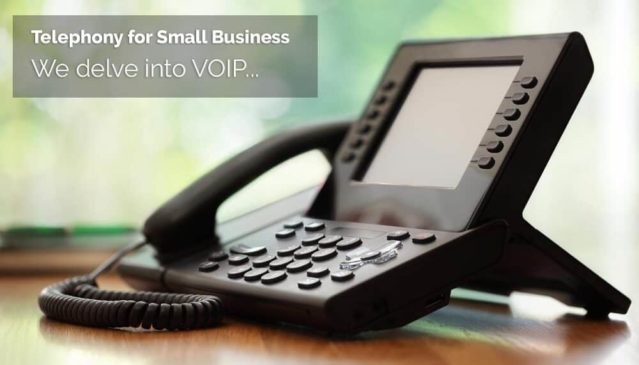One of the high priority items for any business is the ability for the company to be able to communicate with its clients and its workforce. Keeping this in mind, small business also requires cost-effective and scaleable telephony solutions.
Old PBX-based systems fed by inbound analog lines were clunky, unable to adapt to a changing market, and very expensive. It required the skills of the supplier’s proprietary technicians, and this made it frustrating and out of reach for cost-conscious businesses on a small budget.
Changes in the open-source initiative and the technology area for Internet-based telephony have now made various solutions more available and less expensive.
Throughout this blog post we try our best to describe the WHAT and HOW to create a phone system for small business and try to answer some of the more relevant questions namely;
- So what is VOIP?
- Why is it so important to you the business owner?
- What should you be concerned about?
- What are the pros and cons?
- What equipment is required?
- And what are the pitfalls?
So, what is VOIP and how does it work?
Now everybody has heard of the term VOIP.
Pronounced vŏy’p.
But for the ones that haven’t, VOIP stands for Voice Over Internet Protocol. It’s a standard method of communication over-connected networks in which your voice is digitized and broken down into envelopes of sound that can route over the Internet.
The recipient of your phone call, either land-based telephony, mobile phone, or even another VOIP handset, collates these envelopes and recreates the sounds of your voice on the receiving side.
However, for this communication to happen some magic is required. Magic in the way of a Virtual PBX. A Virtual PBX or IP-PBX software is a server that sits either on-site or in the cloud (before you ask the ‘Cloud’ is just another fancy word for the Internet).
All your handsets then connect to this PBX and have calls routed to and from them. An onsite PBX may have its own dedicated hardware to originate the call.
Ok, so what are the items I need to implement VOIP in my office?
A High-Speed Connection and Equipment
Firstly, you need a decent broadband connection. Remember that this connection most likely would be shared among all other types of Internet traffic, such as web browsing, email, and video streaming.

It’s important to get a connection that is non-shaped, and VOIP traffic is giving high priority to the network over others.
On the LAN side, a good router will prioritize traffic over your broadband link and ensure that your voice calls are free from distortion, etc. If the line is shaped, as most NBN connections are, then you’ll find the call quality reduced.
Using a wholesale provided NBN connection may not be sufficient to ensure call quality. Having a dedicated fiber-based connection to the Internet will solve these issues.
Call quality can also be improved by prioritizing packets of information that arrive and leave a network. Software-based routers such as pfSense are perfect and very capable of such a job.
The Open Source approach allows anybody with enough technical skill to be able to configure these devices so that single or multiple calls are the highest priority over other traffic.
If you do decide to use an NBN-style connection, then we recommend implementing a firewall/router capable of load balancing and traffic shaping. Routers such as the Open Source styled pfSense, or Mikrotik, are good examples of devices which cost very little but provide excellent quality.
They can be configured to ensure that VOIP (or commonly known as SIP) traffic is given the highest priority ensuring improved call quality.
Most VOIP providers use G.711 codec. This codec provides a higher quality for each call. It consumes about 64kb of data for every second of talk time. So it’s essential to ensure that your network hardware is capable of traffic shaping.
Multiple calls at 64kb a second can consume a fair amount of available bandwidth from your connection.
So onto the next item.
A Hosted PBX server
Your business requirement in PBX technology depends on how quickly you think your business will grow and how much it needs to scale in a given time frame. There are two approaches, rent a virtual PBX on the Cloud, or have a PBX onsite behind your firewall.
Renting a server is the most practical and cost-effective solution when you first start your business. Many VOIP providers host PBX servers on their infrastructure and allow your handsets, soft phones or mobiles to connect to it. These PBX servers will let you make and receive calls, have those calls recorded, and play business-related incoming call announcements and introductions.

However, this functionality comes at a cost. Most providers will set up virtual extensions for each of your employees. A rental fee is applied to each extension and phone calls made are then also for your account.
Extensions are allocated specific numbers within the system. Desktop phones, soft phones or even mobiles can be configured with this number to receive and make calls.
Your business now has the choice of using a generic 02, 03, 07 style number. So when a customer rings your dedicated number, the PBX will intercept or “terminate” this call, which then routes this call onto the relevant extension.
If your business requires a 1300 or 1800 number, then additional costs are applied. Costs may include a flat-fee for every call received or a fee which is calculated based on call duration.
Hosted Virtual PBX software can create a wide array of configurations. Queues and Ring Groups can be defined which may include one or many extensions. So when an inbound call is received and routed to a Queue or Ring Group, then multiple extensions can be rung at once.
This software is seamless and easy to use for business that is small in scale.
Some providers allow you to manage your PBX, allowing for greater control over your configuration, call recordings, and scalability.
If you do feel like tinkering, then you can have your PBX onsite. Best-of-breed software, such as Asterisk or Elastix, are perfect examples of hosting your IP-PBX server on your network.
By hosting it yourself, you can substantially reduce the cost of having a PBX and having it correctly scale as your small business becomes a big one.
Hosting your PBX onsite allows you to use more sophisticated hardware such as GSM mobile cards.
These cards allow your employees to make mobile-style outgoing calls. Perfect for companies who find their clients vet their phone calls if it’s a private or an unknown landline number.
However, if you feel you can host your PBX, then you’ll need a SIP or IAX2 trunk. An upstream provider provides a Trunk. A trunk is a tunnel between your PBX and the company that receives or makes the call on your behalf.
Calls or channels flow up and down this virtual trunk. Once again there are various costs associated with having a trunk, but it saves the cost of hosting extensions with a provider.
Various features are made available by a PBX. Features such as
- Call transfer
- Day/Night mode
- Queues
- IVR
- Time conditions
- Paging and intercom
Ok, so with that brief overview of IP-PBX, we now move on to the devices that allow you to make and receive calls; The Desktop or Soft-phone.
The Desktop or Soft-phone
All desktops, softphones, or mobile devices, communicate with a PBX. This communication protocol is referred to as the SIP protocol. This protocol is a standard protocol used amongst all types of IP-based phones. Desktop phones etc. need to register with a PBX by providing a valid set of credentials.
These credentials will include a username, or extension number, and a password. Once the device is authenticated is can begin to make or receive calls.

A soft phone is software that acts as a desktop phone. It too needs to authenticate with the server and register itself. A set of decent speakers and a microphone are all that is required to be able to communicate.
Softphones can quickly reduce the cost of ownership over enhanced functionality.
Desktop phones can be rented or purchased outright.
So what are the advantages?
- Allows you to lower the cost of your telephony. Gone are the days when expensive PBXs were out of reach for small businesses. Depending on the VOIP provider you can actually “fix” the cost of your telephony. Great for budgeting!
- You don’t need massive amounts of expensive hardware to have a telephony system
- With standardised communication protocols such as SIP, you can now mix-and-match phones from different manufacturers.
- You can now route incoming calls to specific employee skill sets, such as sales or customer care.
- Most telephony PBX systems have become Unified Communication Services, which now include Fax, Chat, SMS and other methods of communication. Bringing your small business into the 22nd century.
So what are the VOIP negatives?
- The biggest drawback is; if you lose your internet connection, you lose the ability to make and receive calls. Although you can get your provider to fall over to a voicemail system, this is not always ideal and indeed doesn’t provide a level of professionalism.
- Another one is that some providers do not allow their customers to dial emergency services such as 000.
- Most providers allow for unlimited calls which will include calls to national and mobile phones but may become very expensive when trying to dial international numbers.
- VOIP will not be good with spotty and intermittent connections.
So what are the ball-park figures?
So really the cost depends on the type of solution your business requires. A hosted cloud-PBX is far cheaper with less scale-ability. However, an onsite PBX hosted by your server can be less expensive in the long run. We briefly review some of the costs involved.
Cloud-based associated costs
- A decent desktop phone, such as the Yealink T28P, may set you back $198, but a soft phone, such as Bria 5 desktop client, may cost you $65 per license.
- An unlimited National, Mobile, 1300 numbers cloud-based PBX package will cost you $29.99 per extension.
- A further $69.99 would need to be forked out for a decent unshaped Internet broadband connection.
- You’ll still need a quality router on the LAN side, so a device such as the pfSense SG-31000 would be ideal to ensure call quality. But a small business may not want to fork out a further $459.
- You may wish to add an additional 3G/4G Ethernet-based WiFi dongle for added redundancy. So in case, the primary internet connection goes down you have a backup connection to the Internet.
We’ve created links to 5 providers of telephony products to help you get a small cloud-based telephony system up and running. Download our guide to 5 VOIP component providers.
Hosting an onsite server
Asterisk is a Open Source based PBX software system that has been around for a few years now. It’s robust and well-tested by the community. It integrates well with other SIP-based PBX systems and hardware, and the best thing is; it’s completely free!
However, you’ll need to purchase a dedicated server or desktop to run this application. For a few hundred dollars you can get build yourself your server dedicated to this role. However, putting this together requires a high level of technical skill.
Once you have your server up, you’ll need to obtain a SIP or IAX2 based trunk. A trunk will have one or many terminating numbers associated with it, and you can bolt-on 1300 or 1800 numbers too.
At this point, you can have as many extensions as you like – saving a monthly rental fee, unlike the hosted cloud PBX offerings. Some trunk providers average out at about $59 per channel.
Please note: Considering that Asterisk is an Open Source PBX you do need to be acutely aware that such software is available in the Public Domain. Although maintained by thousands of developers you’ll find that there will always be security holes in such software.
It’s therefore vitally important that you review the latest updates and apply security patches according. The development community for Asterisk releases software patches periodically. An example of bug fixes and new features to Asterisk can be found here.
An alternate to Asterisk is 3CX’s offering of their commercial PBX for free for a year . With solid support, a small business could not go wrong by implementing a solution like this until the business establishes itself.
You’ll need technical help.
As a small business owner, you can ill afford not to concentrate on what’s important to you and your business. Implementing an office telephony system requires a fair amount of technical skill. It’s at this point you’ll need the services of a company that provides onsite computer services.
Their computer technicians will audit your network and broadband connection and provide you with a detailed analysis of what’s required to implement a hosted or onsite telephony solution.
Many support companies even supply the hardware too.
The cost of these services can range from $80 to $250 per hour.
But based on an estimate, a telephony system configured from scratch could be up and running within 4 to 5 hours.
Ok – So do you feel like this VOIP stuff is over your head?
Installing and configuring a VOIP server is not for the faint of heart. It does require some technical skill and most business owners don’t want the hassle of managing their own service.
There are many 3rd party VOIP providers out there.
Fortunately, you can rely on our IT Geeks to help you through this process. Buzz A Geek has partnered with OriginNet and Exetel who provide fixed-fee NBN based VOIP services for growing small businesses.
Their NBN+ product provides a dedicated a fixed-fee “all you can phone” type service which includes a monitored NBN connection with 4G fail over.
Perfect for the small business owner looking for a small business phone system, who are time-poor, and budget-conscious.
So what are you waiting for?
We’ve tried to highlight the various options a business owner has when switching from traditional analog PSTN-based lines to a digital system such as VOIP. We hope this blog about telephony systems on a budget has been informative and useful. Let us know by leaving us a comment.
So if you’re time-poor but need a small phone system quickly then why not talk to our computer support geeks today. Our IT support personnel have all the experience necessary to get your business communicating today!
Please head over to our small business VoIP page for further information.












